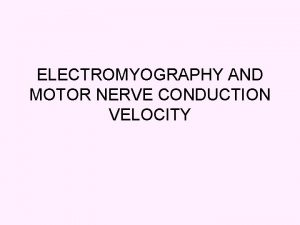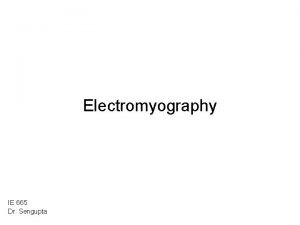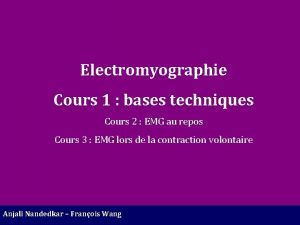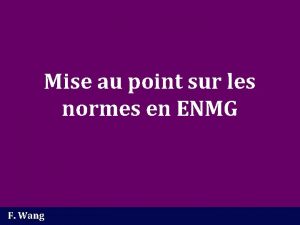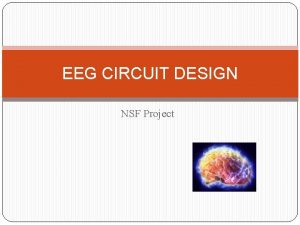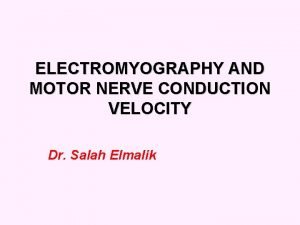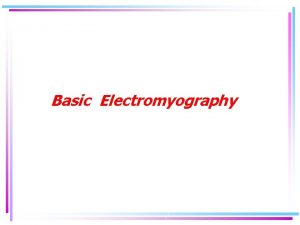EMG ELECTRODES Electromyography EMG is a technique for









- Slides: 9

EMG ELECTRODES

• Electromyography (EMG) is a technique for evaluating and recording the electrical activity produced by skeletal muscles. EMG is performed using an instrument called an electromyograph, to produce a record called an electromyogram. • An electromyograph detects the electrical potential generated by muscle cells when these cells are electrically or neurologically activated. The signals can be analyzed to detect medical abnormalities, activation level, recruitment order or to analyze the biomechanics of human or animal movement.

NEEDLE ELECTRODES Needle electrodes are generally used in clinical electromyography, neurography and other electrophysiological investigations under the skin and in the deeper tissues. ØMaterial used: Stainless steel which is preferred due to its mechanical solidity and low price. ØThese electrodes are generally designed to be fully autoclavable and should be thoroughly sterilized before use ØDifferent types of needle electrodes are used for electromyographic work. They are: Monopolar needle electrodes, Bipolar needle electrodes, Concentric (coaxial) core needle electrode and Multielement needle electrode

MONOPOLAR NEEDLE ELECTRODE ØConsists of Teflon coated stainless steel wire which is barely a tip ØThe coating recedes after being used for several times and the electrode must be discarded when this occurs. They are also color coded.

BIOPOLAR (DOUBLE COAXIAL) NEEDLE ELECTRODE) The synthesis of a motor unit action potential, as recorded by bipolar needle electrodes • • Contains two insulated wires within a metal cannula (is a tube that can be inserted into the body, often for the delivery or removal of fluid). The two wires are bared at the tip and provide the contacts to the patient. The cannula acts as the ground These electrodes are electrically symmetrical and have no sense of polarity.

CONCENTRIC(COAXIAL) CORE NEEDLE ELECTRODE • • Contains both the active and reference electrode within the same structure. Consists of an insulated wire contained within an hypodermic needle. The inner wire is exposed at the tip which forms one electrode. These needles have very stable electrical characteristics and are convenient to use. These electrodes are made by moulding fine platinum wire into hypodermic needle having outside diameter less than 0. 6 mm. One end is bevelled to expose he end of wire and provide easy penetration. The surface area of the exposed tip is less than 00005 mm sq.

MULTI-ELEMENT NEEDLE ELECTRODES • • Used to pick up signals from individual fibers of muscle tissue. These needles have electrode surfaces of 25 micron diameter and 14 pick up surfaces down the side of 1 needle.

GROUND ELECTRODES • • Consists of conducting strip which is inserted into a saline soaked strap and wrapped around the patient’s limb. Usually positioned over bony structures rather than over large muscular masses, in vicinity of the recording and stimulating electrodes, and equidistant from them.

THANK YOU

